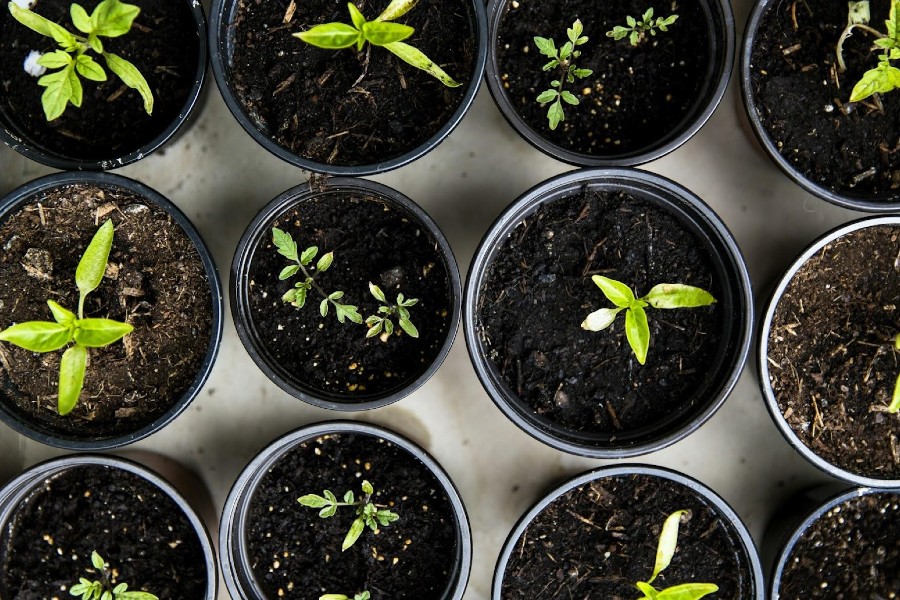
Gardening can be an immensely rewarding hobby, providing not only a source of fresh vegetables and beautiful flowers but also a therapeutic escape from the hustle and bustle of everyday life.
However, one of the most persistent challenges that gardeners face is the invasion of weeds. These unwelcome guests can not only mar the beauty of your garden but also compete with your plants for essential nutrients and water, potentially hindering their growth. In this guide, we will explore tried-and-true methods for effectively eliminating weeds, ensuring that your garden remains a vibrant and flourishing oasis.
1. Preventative Measures
One crucial step in managing weeds is to implement preventative strategies. By employing methods such as mulching, you can significantly reduce weed germination and growth. Mulch acts as a physical barrier, preventing sunlight from reaching weed seeds, and thus inhibiting their ability to sprout. Additionally, organic mulches like wood chips or straw can improve soil health, further supporting your plants.
Another effective preventative measure is the use of landscape fabric or ground covers in your garden. These barriers are designed to allow water and air penetration while blocking sunlight and weeds from reaching the surface. When used in conjunction with mulch, they can provide an almost impenetrable shield against weeds. Trimmers can also be useful in preventing weed growth by cutting off the top portion of weeds, limiting their ability to photosynthesize and grow. This weed eater technique should be used when weeds are small to prevent them from spreading. It’s essential to note, however, that preventative measures alone may not be enough to keep your garden weed-free.
2. Regular Maintenance
Regular garden maintenance is key to controlling weed growth. This includes the simple yet effective task of hand-pulling weeds. Pulling weeds by hand when they are young and their roots are shallow will make the job easier and more effective. It’s crucial to remove the entire root system to prevent regrowth.
Regular hoeing or tilling of the soil can help disrupt the growth of new weeds. However, it’s vital to perform these actions carefully and shallowly to avoid bringing dormant weed seeds to the surface, where they can germinate.
3. Chemical Weed Control
For those looking for a more immediate solution, chemical weed killers can be effective. However, it’s essential to use them responsibly to avoid harming your desired plants or the environment. Selective herbicides target specific weed species while leaving your plants unharmed. Always follow the product’s instructions for application and safety measures.
Organic herbicides, such as vinegar-based solutions, can also be an option for those seeking a more natural approach. While typically less potent than chemical herbicides, they can be effective for managing smaller weed problems without the harsh side effects.
4. Cultivating Healthy Soil
A healthy garden starts with healthy soil. Weeds are less likely to become a problem in gardens where the soil is fertile, well-drained, and rich in organic matter. Incorporating compost into your garden beds can improve soil structure, aeration, and nutrient content, creating a more hospitable environment for your plants and less so for weeds.
Soil testing can be an invaluable tool in understanding what your soil lacks and how to amend it. Properly balanced soil supports plant health, making it more competitive against weeds and reducing the need for chemical interventions.
5. Choosing the Right Plants
Choosing plants that are well-suited to your garden’s conditions can significantly reduce weed pressures. Dense plantings can shade the soil, minimizing the opportunities for weeds to establish. Opt for native plants or those adapted to your region’s climate, as they are more likely to thrive and outcompete weeds.
Cover crops, such as clover or vetch, can also be planted during off-seasons. These crops can suppress weeds, protect soil from erosion, and improve soil health through nitrogen fixation or organic matter addition when they are turned back into the soil.
6. Watering Techniques
Efficient watering techniques can play a significant role in weed management. Deep, infrequent watering encourages deeper root growth of your desired plants, making them more drought-resistant and competitive against shallow-rooted weeds. By contrast, frequent, shallow watering benefits weeds more by supporting their typically superficial root systems.
Implementing drip irrigation or soaker hoses can greatly reduce weed problems by directing water precisely to your plants’ root zones, limiting the water available to weeds. This method not only conserves water but also discourages weed germination and growth, as the surrounding soil remains drier.
7. Utilizing Companion Planting
Companion planting is a natural and effective way to enhance your garden’s health and reduce weed growth. Certain plants, when grown together, can provide mutual benefits, such as improved growth, pest control, and weed suppression. For example, tall plants can offer shade to lower-growing, shade-tolerant plants, reducing the likelihood of weed emergence due to decreased sunlight.
Some companion plants can actively inhibit weed growth through natural chemicals they release into the soil, a phenomenon known as allelopathy. Plants like marigolds, for instance, can deter certain weeds through their root exudates. Strategically integrating these plants into your garden can help create a more dynamic ecosystem and naturally keep weed populations at bay.
8. Regular Monitoring and Swift Action
Regularly inspecting your garden is crucial for early detection and control of weed infestations. Early intervention often means weeds can be managed more easily and with less impact on your garden. Setting a weekly schedule to walk through your garden and inspect for new weed growth can make this task manageable and effective.
When new weeds are spotted, taking swift action to remove them before they have a chance to flower and set seed is essential. This can greatly reduce the number of weed seeds in the soil, leading to fewer weed problems in the future. Consistent vigilance and prompt removal of weeds can significantly contribute to the overall health and aesthetic of your garden.
Managing weeds in your garden requires a multifaceted approach that involves preventative measures, regular maintenance, and careful consideration of the environment. By following these top tips and adjusting them to fit your garden’s unique needs, you can effectively minimize weed growth and enjoy a thriving garden all season long. With persistence and proper care, your garden will remain free from unwanted invaders, allowing your plants to flourish and your garden to be the peaceful sanctuary you envisioned. Moreover, you will have the satisfaction of knowing that you are proactively promoting a healthy and sustainable gardening practice.
Become a Harlem Insider!
By submitting this form, you are consenting to receive marketing emails from: . You can revoke your consent to receive emails at any time by using the SafeUnsubscribe® link, found at the bottom of every email. Emails are serviced by Constant Contact








